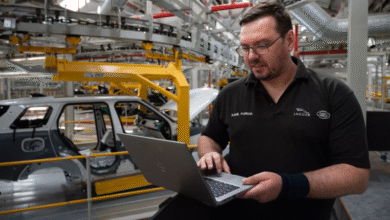Construction Begins on China’s First Flying Car Factory in Guangzhou

On Sunday, groundbreaking began in Guangzhou, southern China, for what is set to become the world’s first mass-production factory for flying cars. This ambitious project is led by XPENG AEROHT, a subsidiary of the electric vehicle manufacturer XPENG.
Spanning 18 hectares, the first phase of the factory will focus on producing the “Land Aircraft Carrier,” a hybrid vehicle designed for both ground and air travel. According to XPENG AEROHT, the facility’s initial production capacity will be 10,000 units annually, aiming to meet both domestic and international demand. The “Land Aircraft Carrier” successfully completed a manned test flight in September, demonstrating the potential for commercial flying vehicles. XPENG AEROHT founder Zhao Deli announced that pre-sales for this groundbreaking model are expected to launch by the end of the year.
Guangzhou, one of China’s most progressive cities, is positioning itself as a leader in the “low-altitude economy,” which encompasses economic activities conducted within airspace typically below 1,000 meters. This new economic sector covers a range of applications, including drone services and flying vehicles, and is expected to grow rapidly. The Huangpu District in Guangzhou is already home to over 50 companies focused on advancing this emerging industry, creating a collaborative ecosystem for innovation and technological advancements in urban air mobility.
Additionally, China’s capital, Beijing, is preparing to further support the low-altitude economy, with plans to host more than 5,000 companies specializing in this field by 2027. This strategic initiative will support not only technological innovation but also regulatory frameworks and infrastructure development essential for the safe operation of low-altitude vehicles.
XPENG AEROHT’s facility in Guangzhou is part of a broader effort to establish China as a global leader in flying cars and air mobility technology. The company’s vision aligns with the Chinese government’s goals for technological leadership, reducing urban congestion, and promoting sustainable transportation solutions. With rising interest in urban air mobility across Asia, Europe, and North America, China’s entry into this sector could have a global impact, sparking further advancements and possibly influencing regulatory standards worldwide.
As the factory’s construction progresses, Guangzhou’s focus on low-altitude technology reflects China’s ambition to redefine personal transportation. The city’s development plan is in step with other global initiatives, such as NASA’s urban air mobility project in the United States and the European Union’s U-Space program, aiming to integrate drones and flying vehicles into urban airspace.




